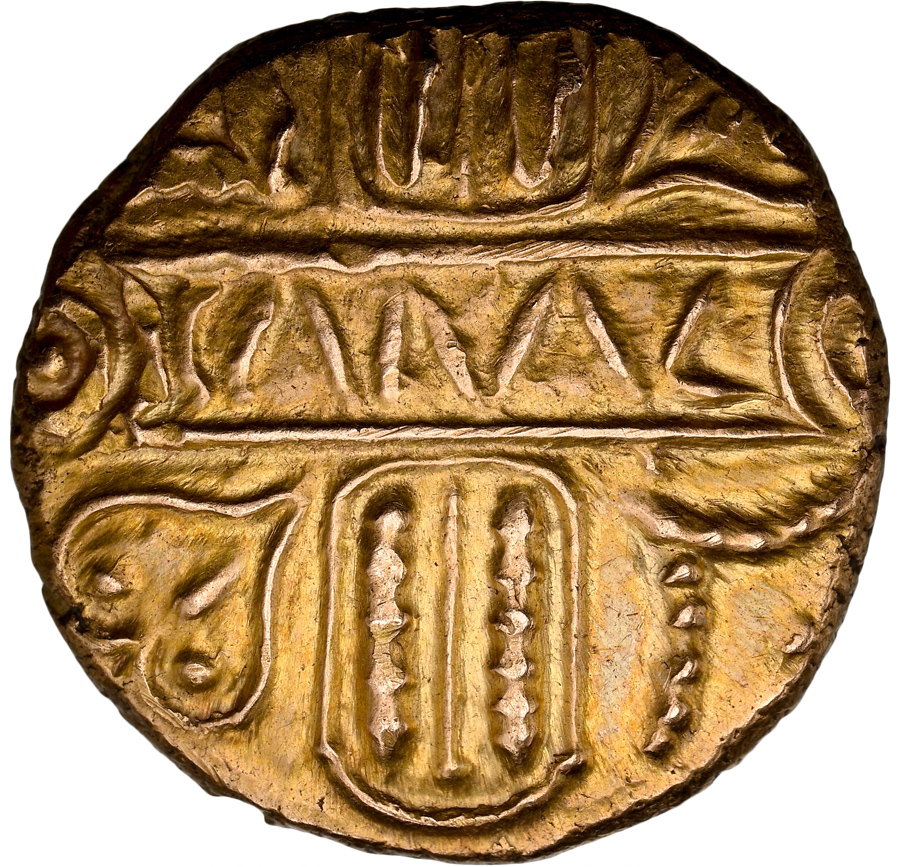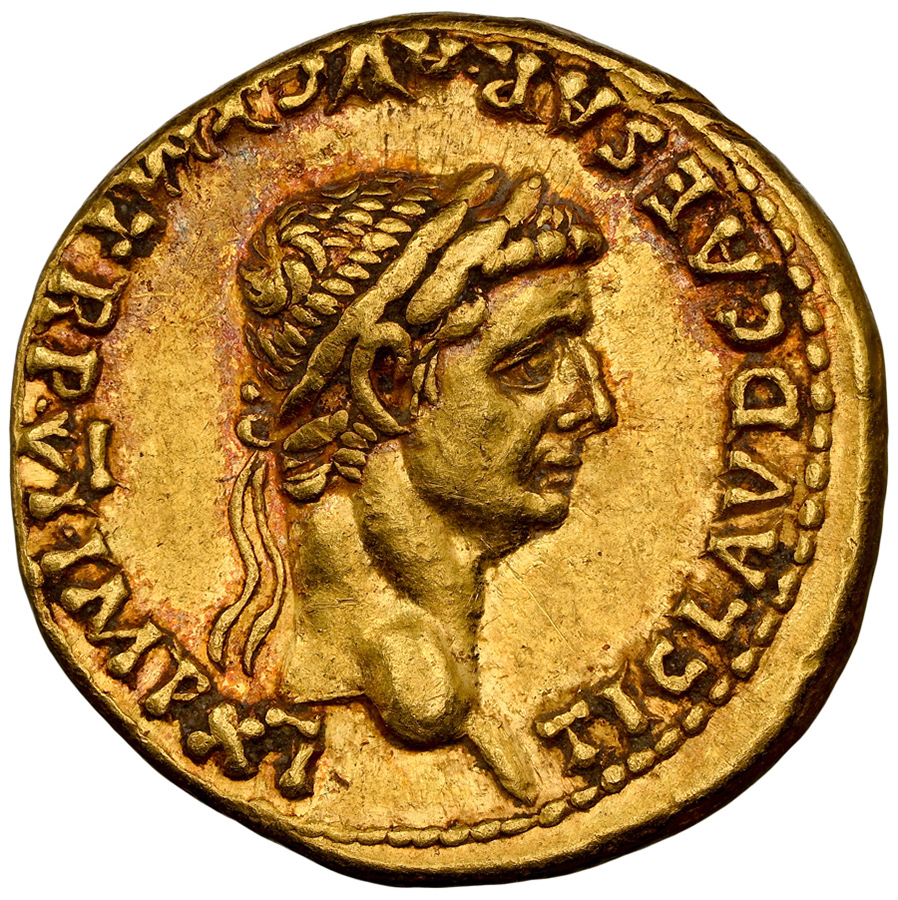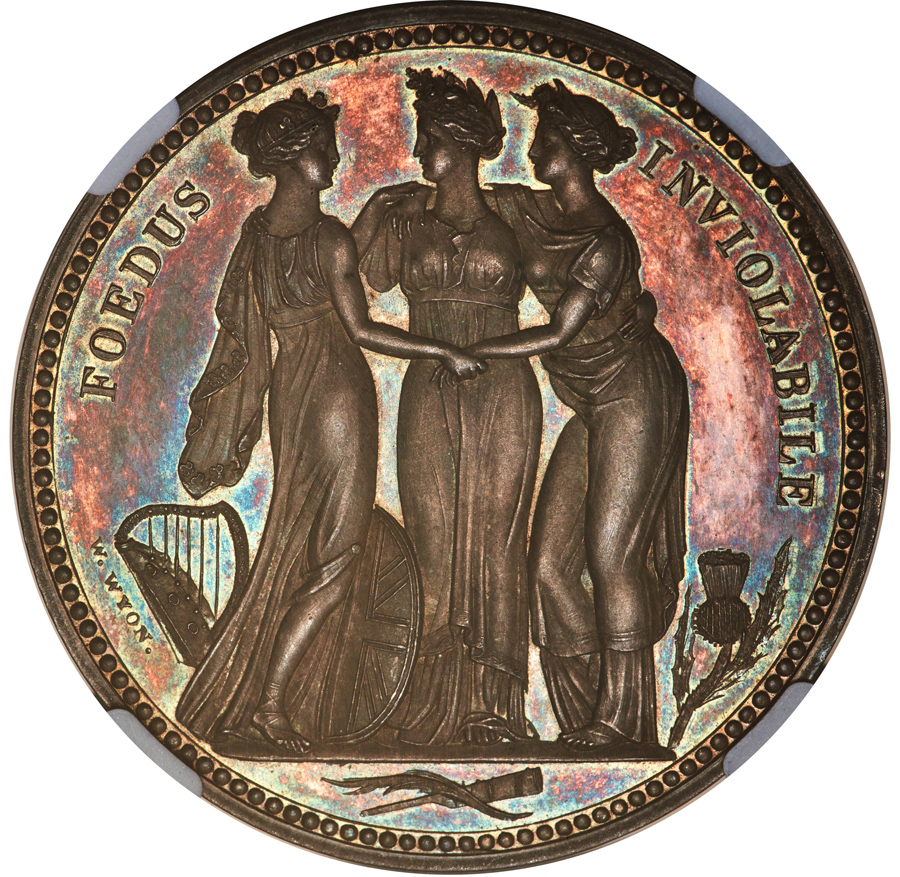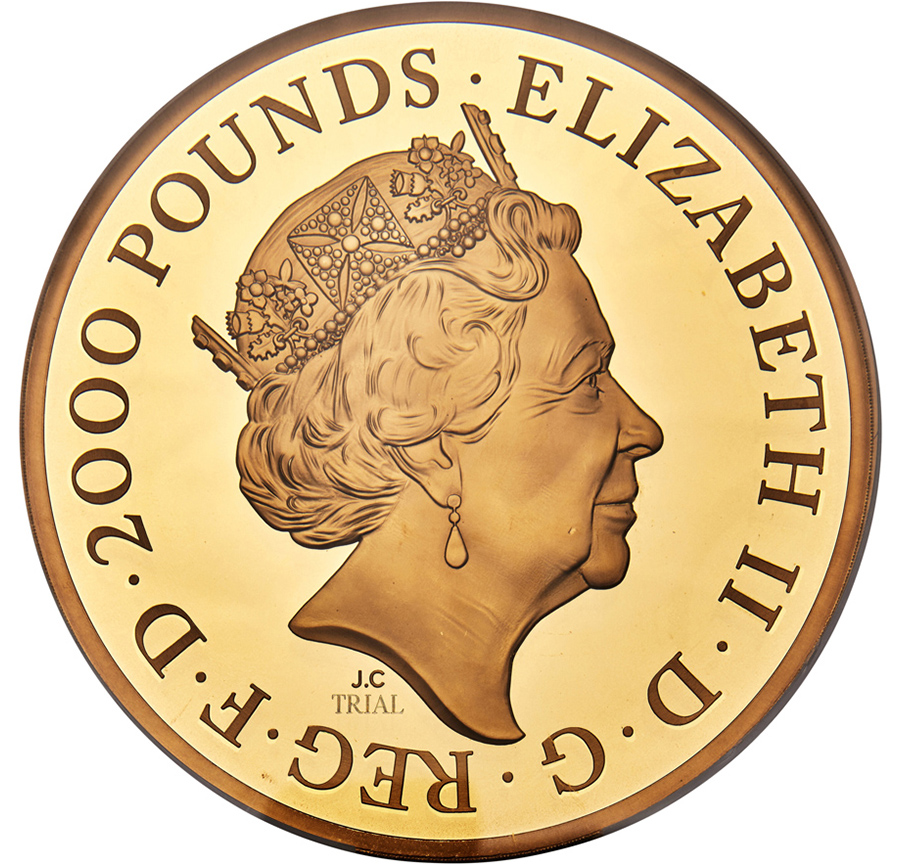FROM THE REIGN OF AN ANCIENT CELTIC KING TO THE DAYS OF QUEEN ELIZABETH, A BRIEF HISTORY OF COINAGE IN BRITAIN TOLD THROUGH SIX UPCOMING LOTS
By Zach Beasley and Kyle Johnson
On January 8, during its first World & Ancient Coins Signature® Auction of 2024, Heritage will offer a bounty of British rarities. Below, we’ve rounded up some of the auction’s history-spanning highlights, ranging from a magnificent example of a rare Celtic ancient to a contemporary issue featuring a design that has mesmerized collectors around the globe for more than 180 years.
Magnificent ‘King of the Britons’ Cunobelin AV Stater
When people hear the term “Britain,” images ranging from King Arthur to Queen Victoria to Queen Elizabeth come to mind. But Britain goes back much further. The Celts began to establish their presence in Britain during the Iron Age, around 800 B.C. The exact timeline of their arrival and spread is a subject of scholarly debate, but it’s widely accepted that by the middle of the first millennium B.C., Celtic influence was well established across much of Britain. The Celts were not a single people but a collection of tribes with shared linguistic and cultural traits. Their rule in Britain wasn’t centralized; instead, it consisted of various tribes and chiefdoms, each with its own territories and leaders.
Often referred to as “The King of the Britons” in medieval folklore, Cunobelin was a Catuvellauni king reigning from the late first century B.C. to the middle of the first century A.D. The son of Tasciovanus, Cunobelin became the most powerful tribal ruler in northern Europe after seizing control of Camulodunum in about A.D. 10. His prosperous reign extended over vast territories in southeastern Britain. Cunobelin’s critical role in the historical narrative also resonates in the world of numismatics. His coinage, predominantly minted in gold, silver and bronze, showcased elaborate and complex designs, often featuring inscriptions, intricate Celtic motifs and divine symbols. Most of his coins carry both his name and that of his capital, which under his command expanded from a large hillfort or oppidum into an international trade center covering 10 square miles.
Rare-Issue Claudius I AV Aureus
In A.D. 43, Emperor Claudius initiated one of the most significant military campaigns of the Roman Empire: the invasion of Britain. This strategic move marked a pivotal moment in both Roman and British history. Prior attempts at conquering Britain had been made under Julius Caesar, but it was Claudius who launched a full-scale invasion. The Roman force, consisting of approximately 40,000 troops, including four legions and additional auxiliary units, landed in southeastern Britain. Led by General Aulus Plautius, the Roman army faced resistance from various British tribes but gradually advanced. The pivotal moment came when Claudius himself arrived to lead the final push, capturing Camulodunum (modern-day Colchester), a major tribal capital. This conquest was significant for Claudius, bolstering his prestige and solidifying his position as emperor. The Roman occupation led to profound changes in British societal structure, urbanization and culture. Roman Britain emerged as a significant part of the empire, marked by the construction of roads, forts and cities following the Roman architectural and administrative models. The Roman rule also initiated the long process of Romanization, influencing the language, culture and politics of Britain for centuries to come.
This rare issue depicts the triumphal Arch of Claudius, commissioned in A.D. 43, dedicated in A.D. 51. It was a conversion of one of the arches of the Aqua Virgo aqueduct where it crossed the Via Flaminia in Italy. The arch no longer exists, but a fragment of the inscription is housed in the Capitoline Museum.
Monumental Henry III Gold Penny of 20 Pence
Bringing us into “modernity” is what many consider the first gold coin of Britain, a penny of 20 pence struck by Henry III around 1257. As such, this specimen is confirmed as a historic issue whose survivorship remains at only a handful, some of which remain impounded as institutional holdings, making any auction appearance of this important type memorable. Having been a detector find near Hemyock in 2021 and its existence as a new die pairing, evidenced by the refined throne on which Henry sits, only add to the allure and character of the piece at hand.
The Second-Highest Graded ‘Petition’ Crown by Thomas Simon
A relic of one of Britain’s most tumultuous eras and struck just after the conclusion of the English Civil War, this Charles II “Petition” crown of 1663 in MS62 is among the most celebrated and sought-after types in silver. Having only handled a single example prior to this, the XF40 Paramount piece, and with approximately 20 extant examples, we are absolutely delighted to handle this second-finest specimen. Long considered among the most artistic renderings of a monarchical portrait on a coin, the aesthetic caliber cannot be understated. While the quality of the engraving by Thomas Simon is unrivaled, it is the edge inscription, or Simon’s “Petition” to Charles to be appointed his chief engraver, that gives the piece its namesake.
William Wyon Masterpiece ‘Three Graces’ Pattern Crown
Another numismatic masterpiece that represents the height of neoclassical design not only in Britain but also across the entire artistic movement is the pattern “Three Graces” crown of George III, engraved by William Wyon and certified by NGC PR63 Cameo. Known for his use of allegory to represent figures associated with Great Britain, Wyon commands the attention of the most discerning collector and history lover, depicting England, Ireland and Scotland personified as the Three Graces of Greek mythology wrapped in a circular embrace; the three goddesses together represent the United Kingdom.
Monumental Gold Trial ‘Una and the Lion’ 2 Kilo Issue
With great engravers in mind, on offer is a most aurous and monumental example of the Royal Mint’s revitalization of some of Britain’s most iconic numismatic products, here as a gold 2 kilo trial of the 2019 “Una and the Lion” 2000 pounds. Showcasing William Wyon’s skill on a massive 150mm proof planchet, the beautiful rendering of Victoria and an allegorical Britain as the lion simply astounds, contributing to a surge of interest in modern commemorative types and numismatics on the whole.
 ZACH BEASLEY is Director of Ancient Coins at Heritage Auctions. He can be reached at 214.409.1741 or ZachB@HA.com.
ZACH BEASLEY is Director of Ancient Coins at Heritage Auctions. He can be reached at 214.409.1741 or ZachB@HA.com.
 KYLE JOHNSON is Director of World Coins at Heritage Auctions. He can be reached at 214.409.1490 or KyleJ@HA.com.
KYLE JOHNSON is Director of World Coins at Heritage Auctions. He can be reached at 214.409.1490 or KyleJ@HA.com.













